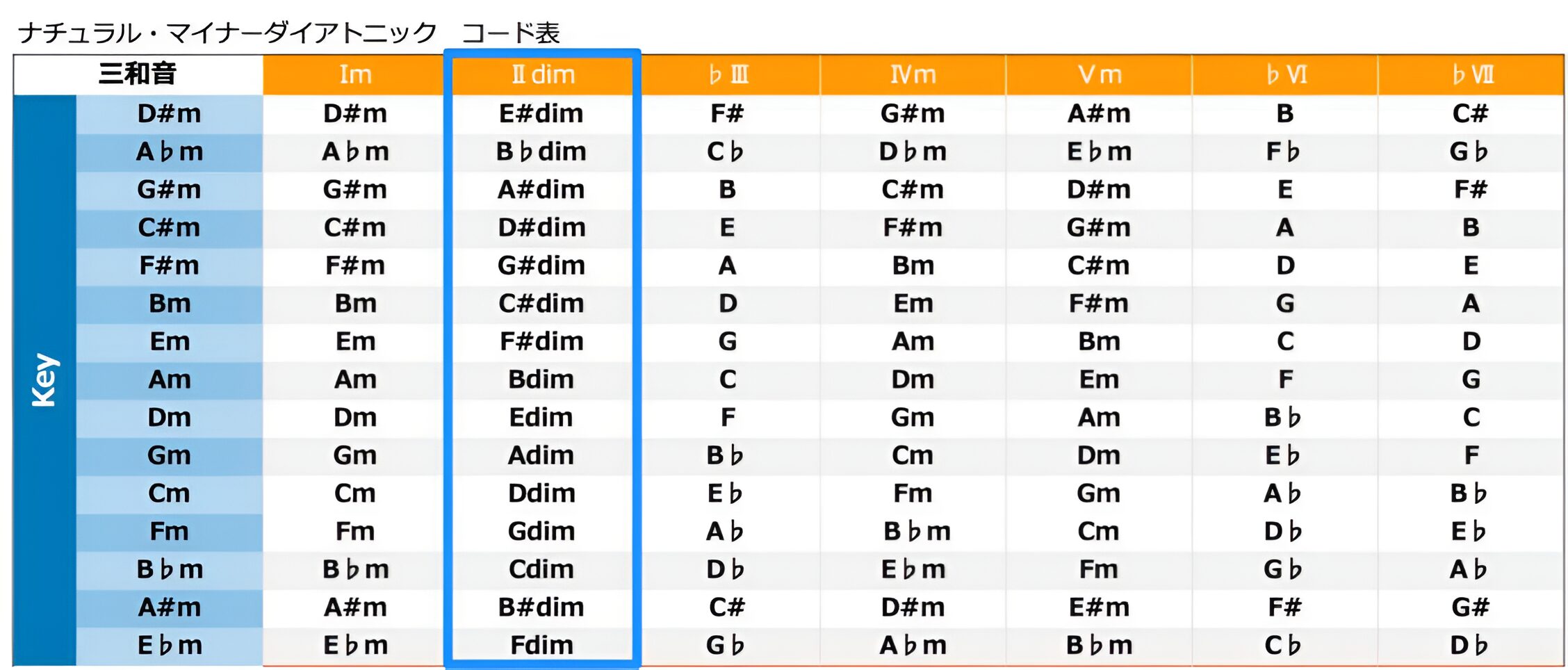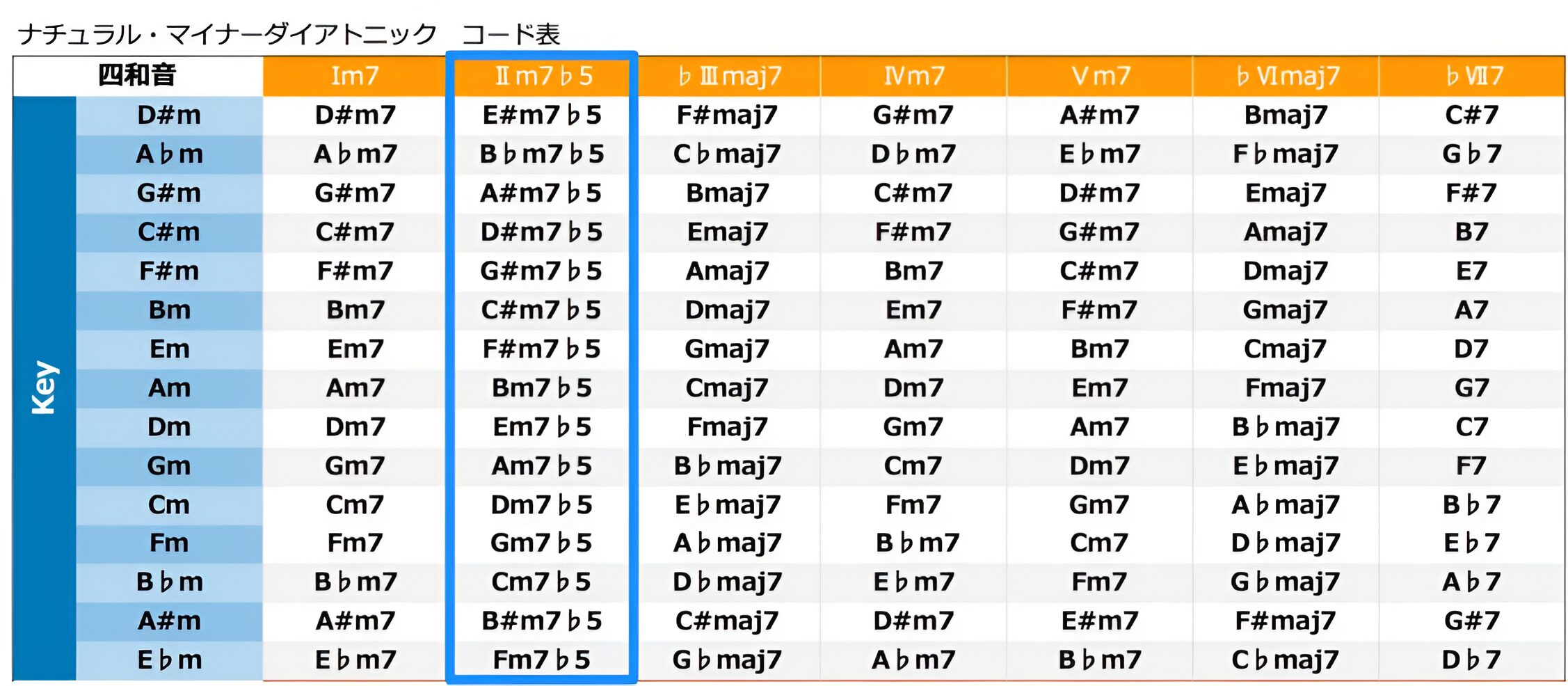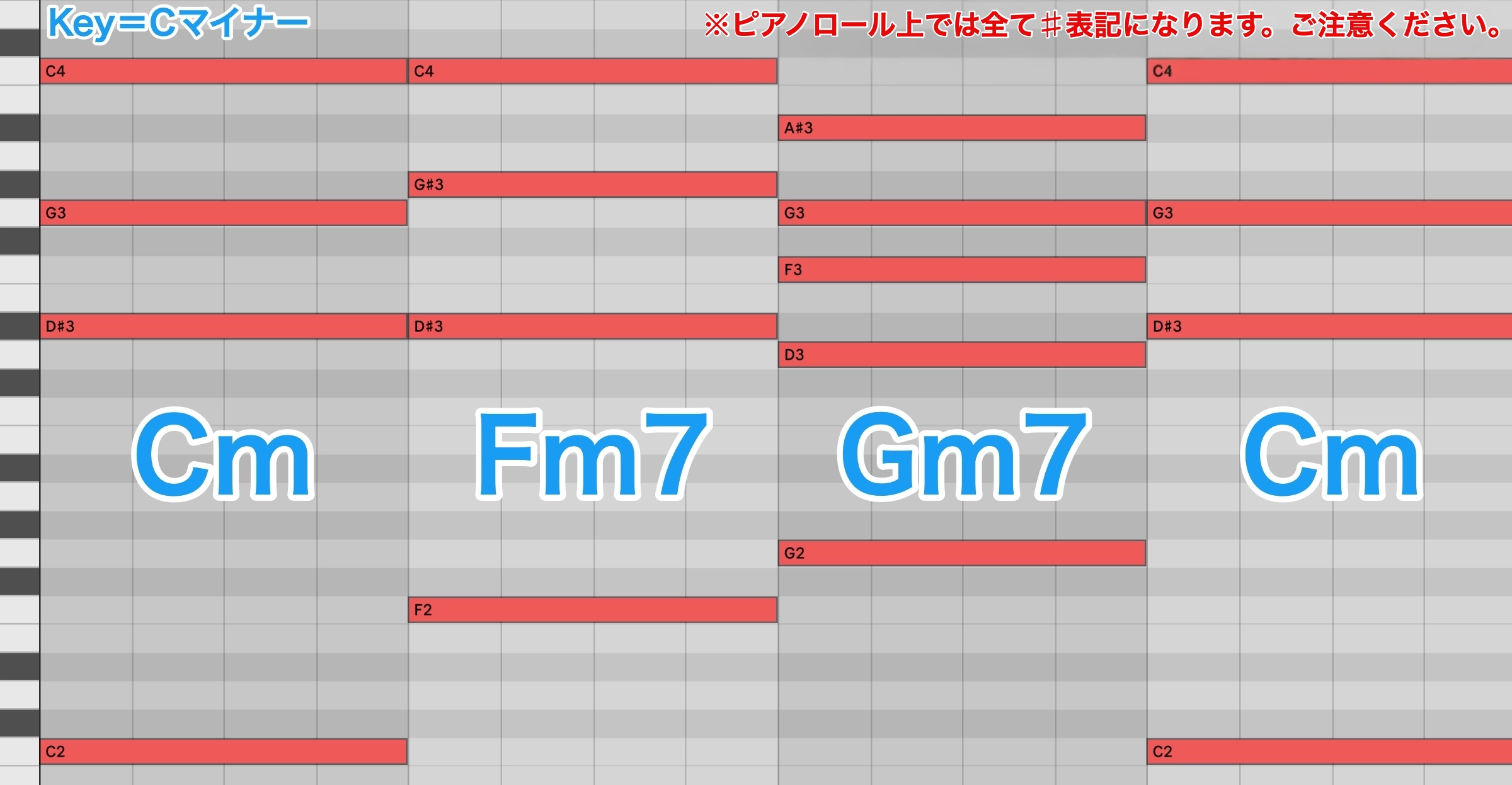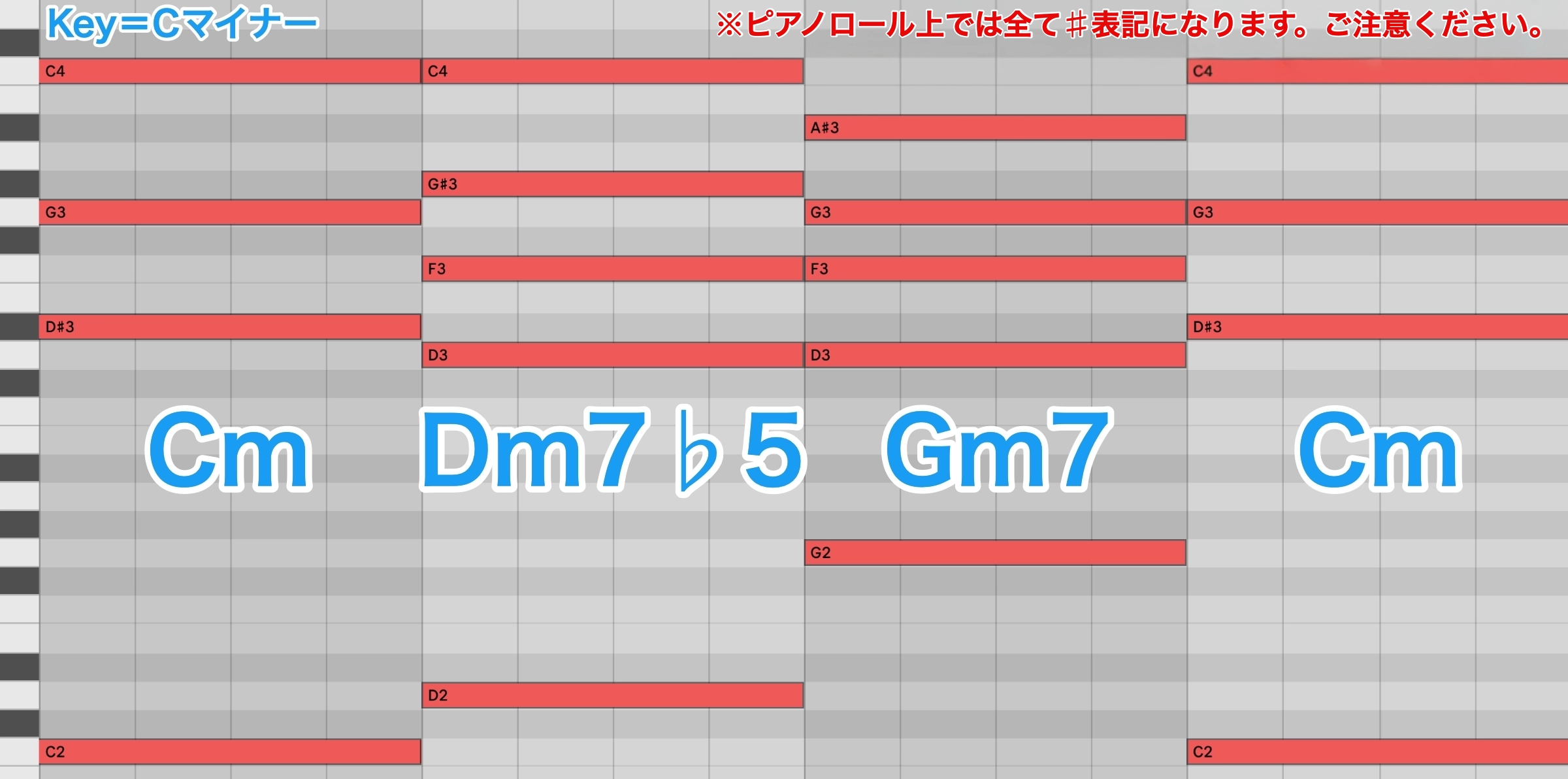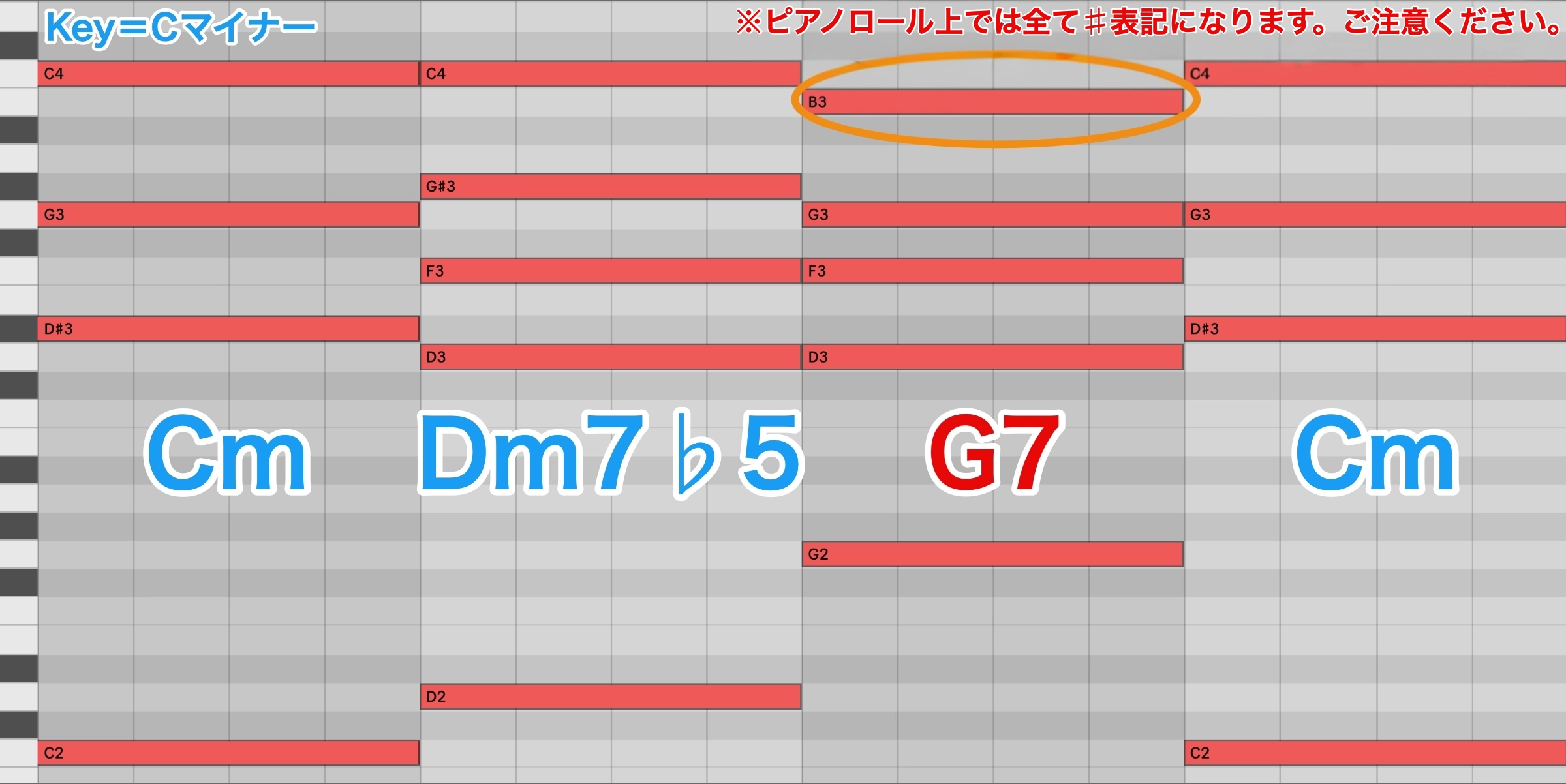マイナー版ツーファイブ(II-V)/音楽理論講座
マイナーの主要三和音以外を使う
今回は、メジャー同様の手順で確認しながら、マイナーの主要3和音以外の使い方も習得していきましょう。
実は今回の内容は、使いにくかったメジャーのダイアトニックの7番目のコード「VIIdim」「VIIm7♭5」を楽曲に自然に取り入れる方法の1つにもつながってきます。
「25. ディグリーネーム(4和音)の活用とノンダイアトニックコードの存在」でも示した「Fly Me to the Moon (In Other Words)」の前半部分では、強い自然な流れで組み込まれていました。
この辺りの詳細については、また後の回で詳しく触れていきます。
ここからは、以下の内容も必須となりますので、復習しておいてください。
IVm (IVm7) の代理コードとなりうるIIdim (IIm7b5)
これまで、主要3和音のみで形成されたケーデンスをご紹介してきましたが、もちろんマイナー・キーの楽曲で使用されるのは、その3つのコードだけではありません。
メジャーの際に「他のコードでもこれらのファンクションに近い機能を持てる」とお伝えしましたが、マイナー・キーでもその他のコードで置き換えが可能=「代理コード」として使用できる可能性がある、というイメージです。
メジャーの際は安定から次の展開があり、緊張感を経て安心感を得るという代表的なケーデンス「T→SD→D→T」において、SDの箇所にSD(代理)コードを入れて確認しました。
例)Key=Cメジャー
- C→F→G7→C
- C→Dm7→G7→C
安定から次の展開があり、緊張感を経て安心感を得るという一連のストーリーの流れは、さほど変わっていないように聴こえます。
つまり、IIm7をSDの代理として使用できたということですね。
そして、ルート音(根音)に意識を集中して聴くと、強進行となる後者の方が、コード進行が力強いと感じると思います。
このイメージを、マイナーでも試してみましょう。
52回で取り上げた、マイナーのT→SD→D→Tをベースに確認していきます。
❇︎全てトニック、サブドミナント,ドミナント上に出来上がるコードですので、T,SD(S),Dのみで表記する場合もありますが、今回もわかりやすく上記画像のようにしましょう。
まず、マイナーキーの”II”はどこでしょうか。
各表で、青く囲んだ部分ですね。
実際に取り入れてみましょう。
Key=Cマイナーで確認していきます。
T→SD→D→T
- Tm→SDm→Dm→Tm / Cm→Fm7→Gm7→Cm
これに対し、SDmの箇所に、代理コードとしてよく使⽤されるIIm7b5を使⽤してみましょう。
- Tm→SDm(代理)→Dm→Tm / Cm→Dm7b5→Gm7→Cm
悪くはないですが、少し曖昧な感じが残りますね。
では、後半をより”強い”流れにしたものに変えてみましょう。
T→SD→D→T
- Tm→SDm→D→Tm / Cm→Fm7→G7→Cm
- Tm→SDm(代理)→D→Tm / Cm→Dm7b5→G7→Cm
より強い進行感を感じますね。
キーの感じも掴みやすいと思います。
一般の楽曲を分析してみると、こちらの流れの方がよく見かけると思います。
後半のSD→D→Tの強進行がより強くなった印象を受けますね。
ぜひ、楽曲分析の際もこの流れを見つけたら、注目してみましょう。















